Saturday evening witnessed the Copa del Rey final which took place at the Benito Villamarín. Entering the centre stage was Barcelona, who were hungry to complete the double after being crowned as La Liga champion. They wanted to shake things up after being eliminated by Liverpool in the Champions League.
On the other side, Valencia wanted to cap off their decent season with a piece of silverware. They have secured a Champions League spot next season through the fourth spot in La Liga. The Europa League also saw a good run from Marcelino’s side until Arsenal’s domination eliminated them. In the end, Kevin Gameiro and Rodrigo’s goals helped Valencia won their first Copa del Rey since 2008.
This tactical analysis will help you take a closer look at how Barcelona lost their chance of completing the double. At the same time, using statistics, we will analyse the factors that helped Valencia came out as champions.
Lineups
Ernesto Valverde lined his side in a 4-1-4-1 formation, with a view of changing into a 4-3-3 when attacking. The loss of Luis Suárez hit Barcelona hard as they were forced to play Lionel Messi as the lone striker. Gerard Piqué and Clément Lenglet paired up as central defenders and in front of them was Sergio Busquets. Out wide, the Catalunian side also lost Ousmane Dembélé and he was replaced by Sergi Roberto on the right-hand side.
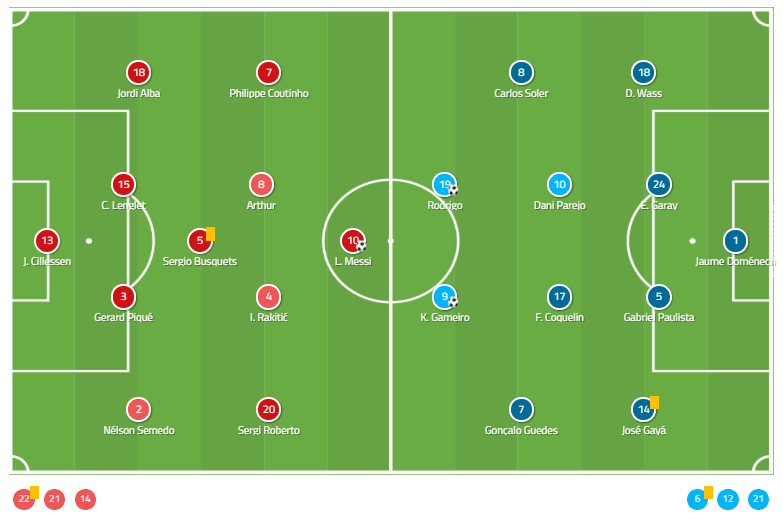
Valencia fielded their strongest team for this final. Ezequiel Garay managed to return on time and played alongside Gabriel Paulista in the centre of the defence. Francis Coquelin would provide support for the defenders while Dani Parejo acted as Valencia’s playmaker. Gonçalo Guedes and Carlos Soler provided speed on both flanks, while the goal-scoring responsibility was placed upon Rodrigo and Kevin Gameiro.
Valencia’s defensive structure and their counter-attacks
As expected, Valencia entered the game with a cautious mentality. They played with a narrow 4-4-2 defensive shape, with the aim of limit Barcelona’s entries into the half-spaces and central spaces. The first defensive line would try to press the ball-carrier and his passing options, preventing any through balls come from him.
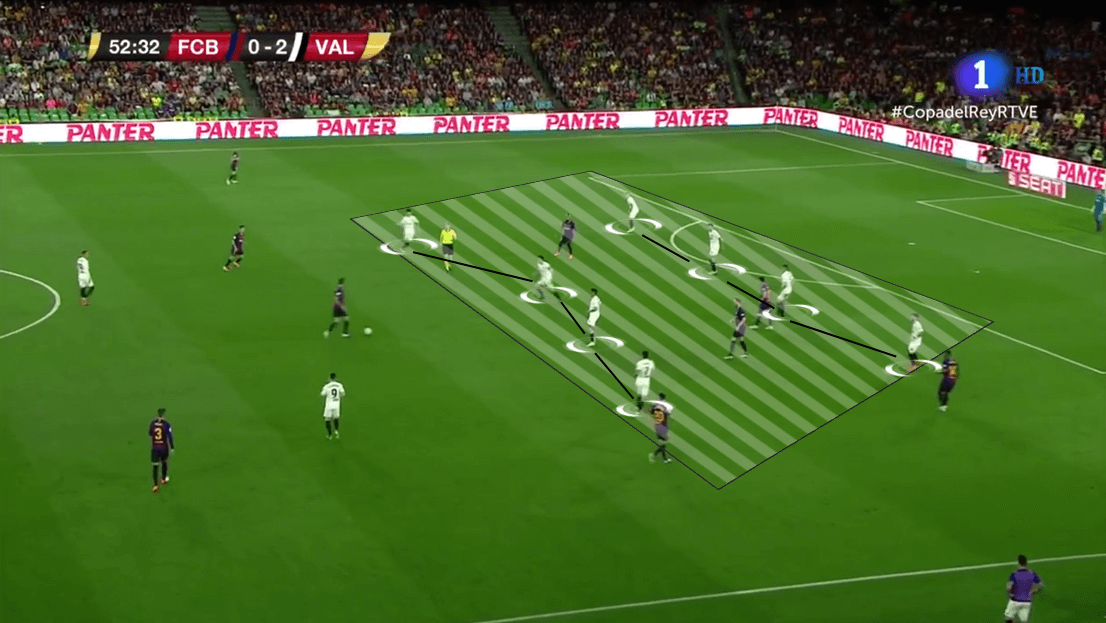
At the same time, they would keep the distance between the lines as narrow as possible. Marcelino wanted his players to eliminate every possible attack that could come from the spaces between the lines. With Barcelona attempted to overload the middle area on many occasions, this strategy was crucial in keeping the La Liga champions from reaching Jaume Domènech’s goal.
As a consequence, their narrow defensive structure left the wide spaces unoccupied, inviting Barcelona wide players to join the attack. In that case, the players would follow the ball and shift their shape with it. This was an intentional decision as Barcelona’s weakness was crossing. Throughout the game, they registered 21 crosses but could only complete five of them. Not to mention, two of them came from the substitute Malcom.
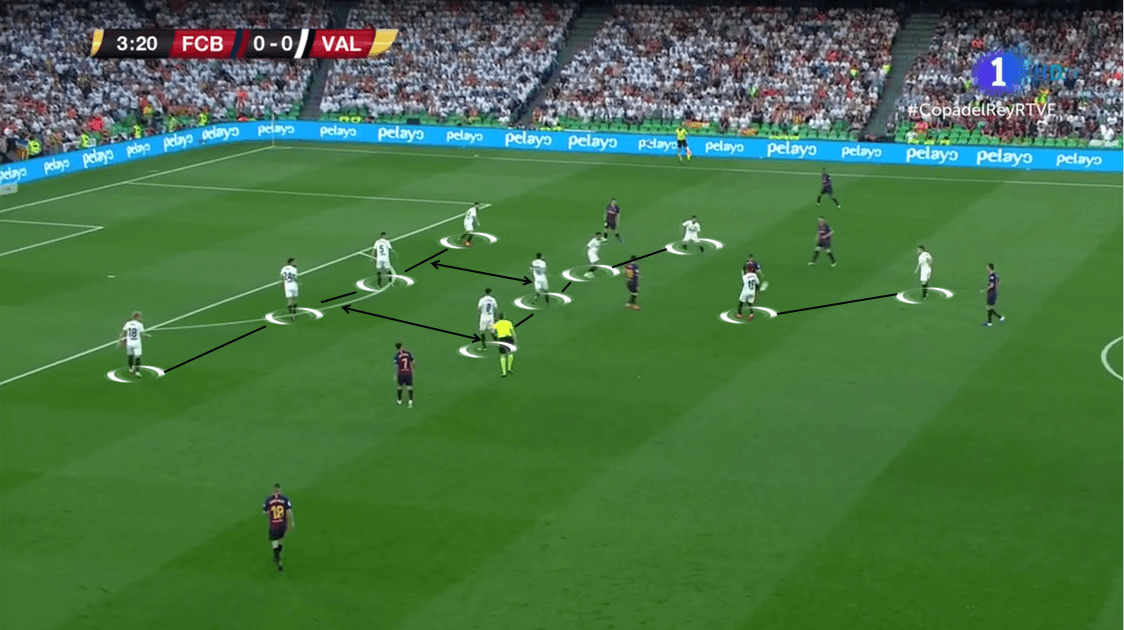
In the shot above, we can see how the first defensive line teamed up to the strikers to overload the middle area. They attempted to lock the ball-carrier down and forced him to make a back pass or distribute wide. The second defensive line kept the distance between players a bit widen. Daniel Wass and José Gayà would occupy the half-spaces and track the runs of Philippe Coutinho and Sergi Roberto. They would also act as the focal point when the team shifts across the pitch to press.
Up front, Valencia also increased the pressure on Barcelona’s centre-backs when they built from the back. Rodrigo and Gameiro were always ready to press aggressively and recover the ball inside the opposition’s half. If Piqué or Lenglet managed to move the ball out wide, either Soler or Guedes would step out of the shape to provide support for the strikers. Some of those situations have been converted into chances by Valencia players, but Barcelona soon recovered and stopped them.
Not converting the chances came from the press, but Valencia were relentless on counter-attacks. Inside the first half, they consistently attacked behind Barcelona’s defensive line, especially out wide. Below is Valencia’s build-up for Gameiro’s opening goal. We can see Wass and Gayà were located inside the opposite half, waiting for a long ball. And that created two options to play a lofted pass for Garay.
He picked Gayà out when the Spaniard was ready to make a run into the spaces behind Nélson Semedo. The pass caused frustrations for Barcelona defenders and they were forced to follow Gayà and the ball. This left Gameiro opened, and with a twist over Jordi Alba, the French forward opened the score.
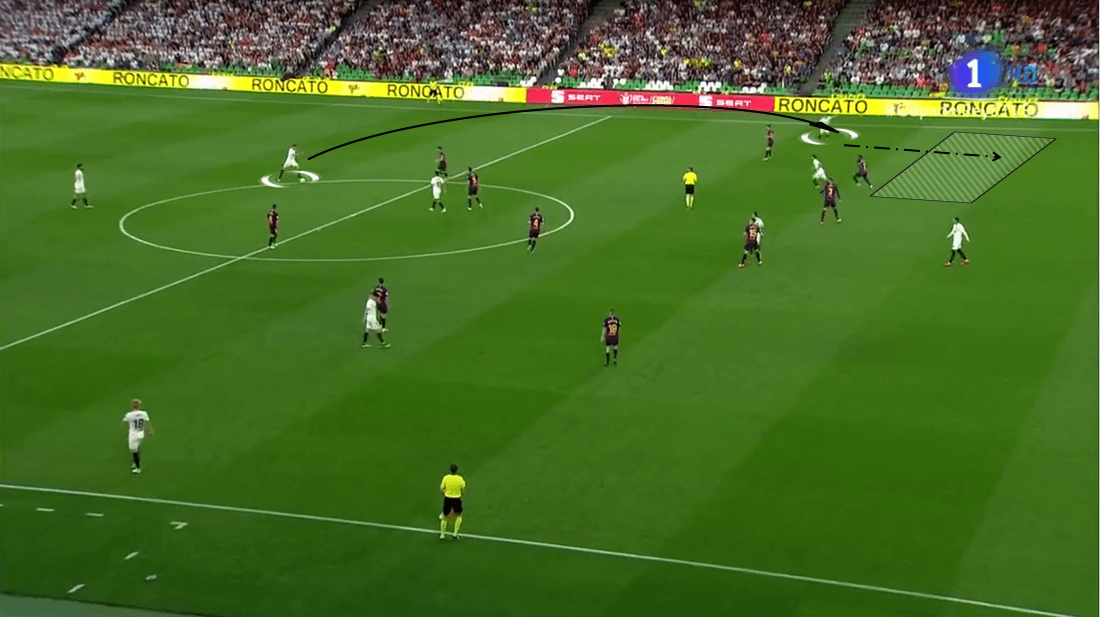
Twelve minutes later, the second goal came. And once again, it was from a counter-attack. The spaces behind Barcelona’s defensive line was vulnerable and Soler capitalised it. He beat Alba with pace and made a cross inside for Rodrigo to head it home.
Another problem for Barcelona in this conceded goal was the defenders lacking support. Although they managed to run back, they didn’t receive any support from the midfielder. If the ball bounced out, either Gameiro or Coquelin could still move in for a rebound.
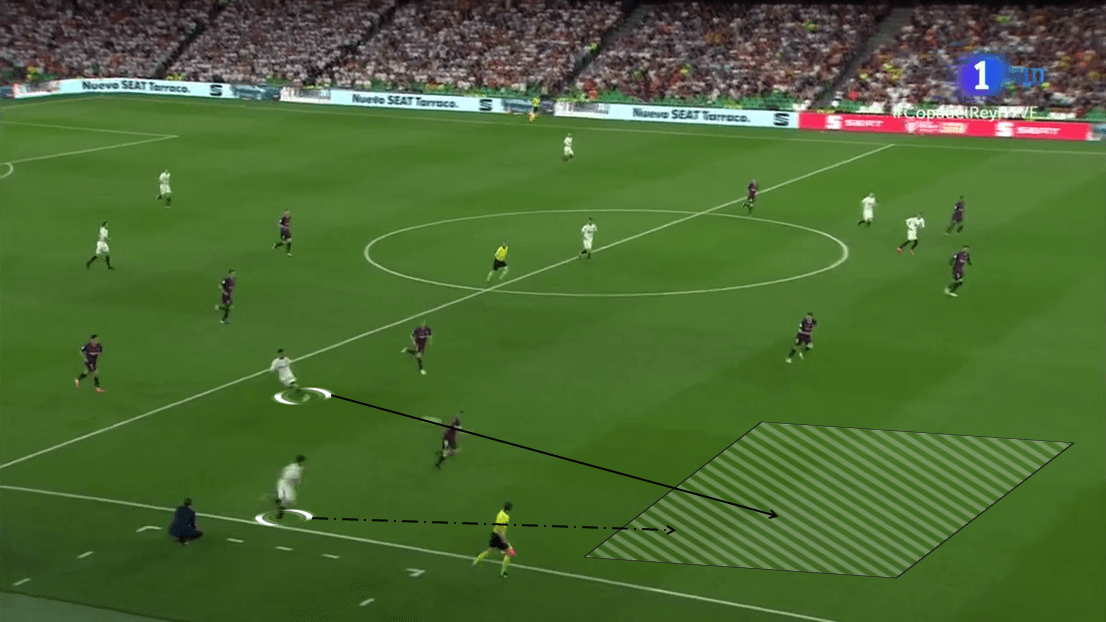
In the second half, Valencia didn’t have many changes to their system. But there was a tactical tweak in the 65th minute. Dani Parejo was injured and was forced to go off for Geoffrey Kondogbia. Accidentally, Kondogbia’s appearance really enforced Valencia’s defence as the French midfielder’s work rate was decent. He was willing to support Coquelin whenever his colleague stepped out to make a tackle.
As for Coquelin, he had a terrific game as he provided solidity for Valencia’s defence. In total, he attempted nine tackles and completed five of them, which included a double tackle to recover the ball from Messi in the 85th minute. Other than that, he made 28 passes and his success rate was 71%. It’s fair to say that Coquelin was one of the standout performers last night for Valencia.
Barcelona’s problems throughout the game
As mentioned, Barcelona’s formation could turn into a 4-3-3 when they are on the attack. But in reality, they played with a 3-4-3 with Sergio Busquets dropped in the middle of the centre-backs. By doing that, Busquets would fill in the spaces that Piqué left behind, allowing the right centre-back to make overlaps.
This formation allowed Valverde’s side to have numerical superiority inside Valencia’s half. It also created more passing and attacking options for the ball-carrier. But they struggled to enter the final third due to Valencia’s defensive structure that we have analysed earlier.
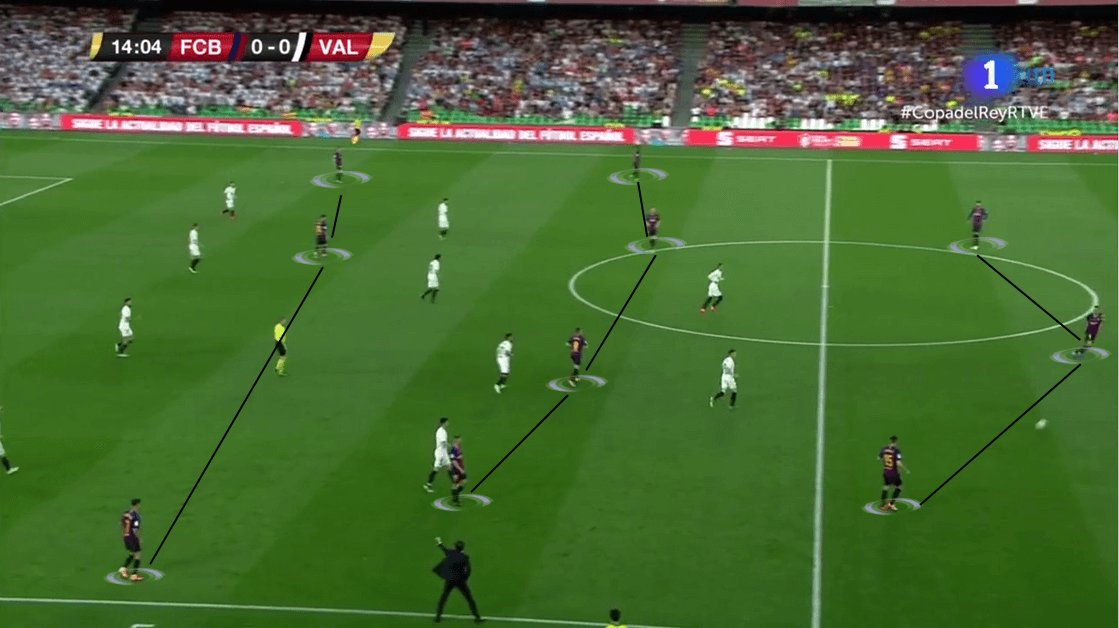
Barcelona also tried some methods in order to break that structure down, and one of them was lofted through balls. The shot below demonstrated one of those situations. Notice how Semedo moved into the spaces behind Barcelona’s defensive line and Arthur immediately provided him with a pass. Unfortunately, like other situations, Valencia defenders managed to track back and stop the attempt.
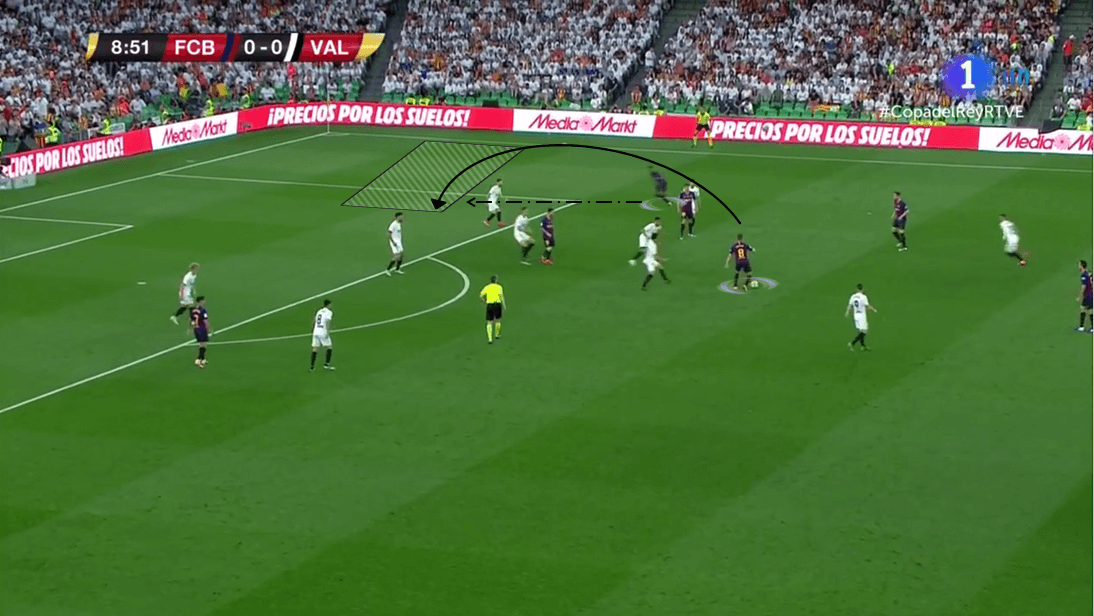
At times, it seems that Barcelona have found a way to beat Valencia’s defensive structure. Valencia players tended to step out to follow the ball-carrier and it opened up spaces which Barcelona could capitalise upon. The below example showed that Arthur’s movement has attracted Parejo with him, therefore created spaces. But Messi and Coutinho didn’t move into that space and wait for a lay-off. Instead, they kept their position and this forced the Brazilian midfielder to play a back pass for Rakitić.
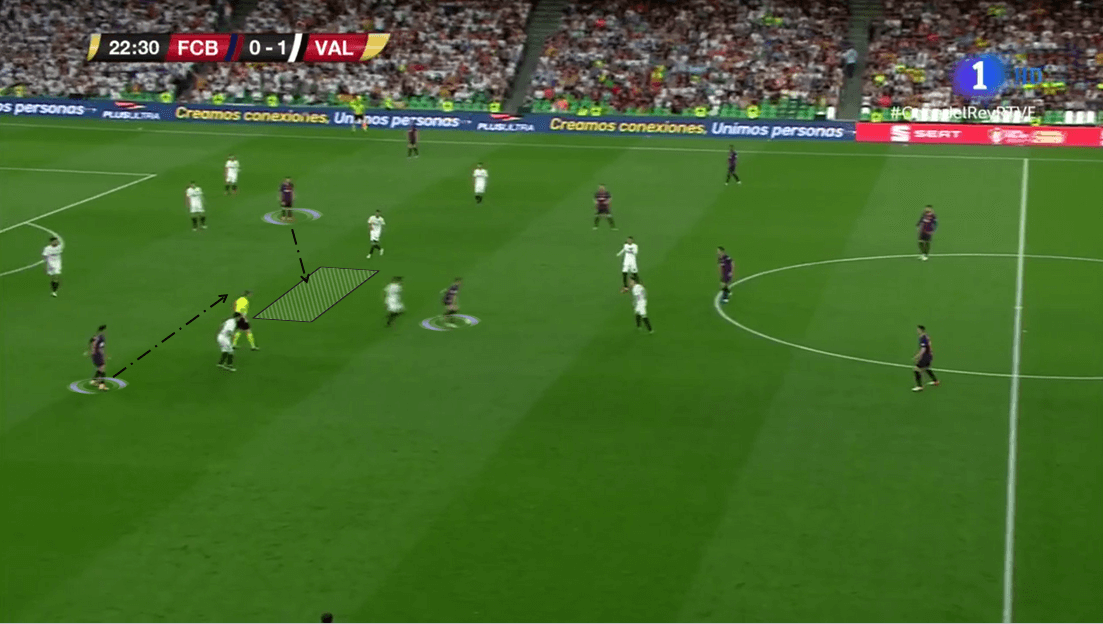
In defence, their biggest problem was covering the spaces behind their defensive line. Valencia’s two goals have indicated that clearly and it made them paid. In both goals, Semedo’s poor positioning was possibly the main cause that led to the goals. He could have stopped the pass from Garay and marked Rodrigo tighter. But, alongside those, Barcelona’s conservative press contributed to the team’s loss. The players weren’t aggressive and actively moving towards the ball, leaving many options for Valencia players.
Valencia made 33 clearances in the match, and all of them came inside of the final third. Some of them came from Barcelona’s unsuccessful attacks, but there were some that came from Valencia’s build-up. They tended to play out from the back and were always looking for long balls into Barcelona’s half. Valverde instructed his players to close down, not aggressively press to recover the ball. That is why Valencia defenders always have times and spaces to make a clearance.
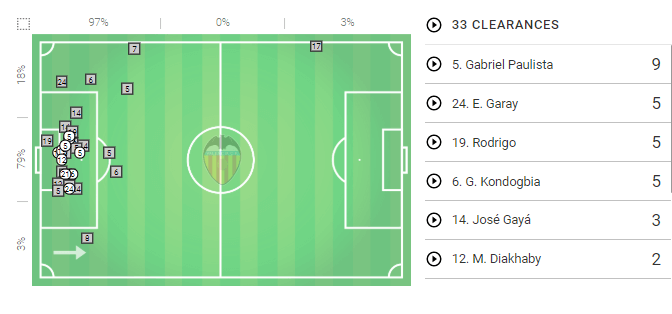
Conclusion
Barcelona’s loss against Liverpool still hurts the Catalunian side a lot. They came into this season with high confidence of winning a treble, but they didn’t complete it. Their loss against Valencia on Saturday evening has once again shown the pressure of winning trophies. Valverde and his players entered the match hoped to salvage their season with at least a domestic double. In the end, they have come out as runners-up in a match where Valencia was superior in defence.
A big congratulations to Valencia, who had kept their confidence from the first half until the last minute of the game. Marcelino’s plan was a big success as his players managed to hold Barcelona down for most of the time. This trophy will be big momentum for the team next season as they will return to the Champions League.
If you love tactical analysis, then you’ll love the digital magazines from totalfootballanalysis.com – a guaranteed 100+ pages of pure tactical analysis covering topics from the Premier League, Serie A, La Liga, Bundesliga and many, many more. Buy your copy of the May issue for just ₤4.99 here, or even better sign up for a ₤50 annual membership (12 monthly issues plus the annual review) right here.

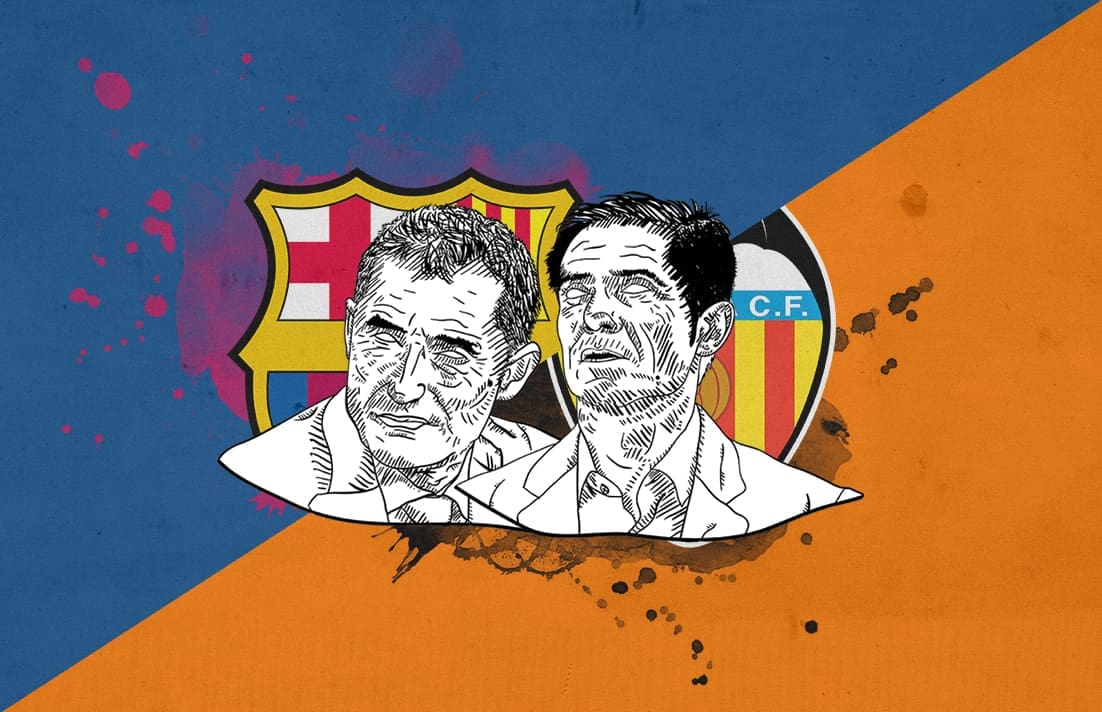



Comments